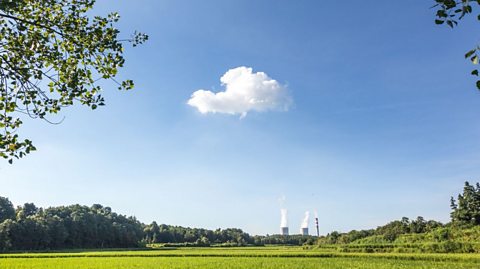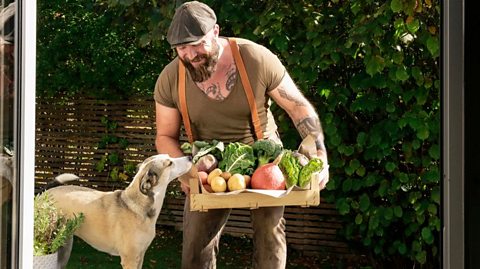This article was last updated in February 2020
Flooding is becoming a more frequent problem in the UK and we are likely to see more floods in the winter months.
Floods can happen very quickly ÔÇô Sheffield, Rotherham and Doncaster recently flooded when the River Don raised five metres in just 24 hours.
UK winters are having warmer days as well as more freezing ones. February 2019 was the warmest winter month on record since 1998, and a cold wave similar to the Beast from the East, which chilled the UK and Ireland in 2018, is expected to come in January and February 2020.
One reason for the more extreme weather is climate change: for every degree hotter the atmosphere gets, the more rain it can hold - up to 7% more. This results in more downpours and an increase of flooding, particularly flash and river flooding.
So what can you do to be prepared to take care of yourself and others around you?
We spoke to environmental scientist Angela Terry from Climate Alliance, who gave us some handy tips.
DonÔÇÖt worry - hopefully you wonÔÇÖt need the advice, but itÔÇÖs always handy to know and share.
Before a flood ÔÇô what to do
1. Sign up for flood alerts
Find out whether you or your family are in a flood risk area. You can check flood maps online, and get flood warnings as soon as they are predicted.
Flood alerts will also tell you any actions you may need to take depending on the level of risk - such as preparing a bag of supplies.This is particularly helpful for people who live on their own. Alerts are not always possible for flash floods, however, as theyÔÇÖre often unexpected.
The Environment Agency also recommends the National Flood Forum. They can provide more information if youÔÇÖre at risk of flooding, as well as support in your area during and after a flood.
2. Get suitable clothing
Wellies and water-proof clothing are always handy, especially if you live in an at-risk area.
3. If youÔÇÖre at risk - prepare a grab bag
A grab bag is an easy to carry bag, like a ruck sack, which can carry essential supplies. The lowest-level flood alert might advise you to prepare a grab bag. Some essential items include:
- Water
- Clothes
- Food
- Medicine
- Phone charger
- Batteries
- Toiletries
- Torch
- Cash and bank card
Staffordshire Council has a detailed list of .

4. Take photos of your possessions
If your house is at risk of flooding itÔÇÖs important to have a record of your possessions so you can claim insurance.Take pictures of everything ÔÇô especially your valuable items. This will make things easier when claiming and recovering from flood damage.
5. Know your local area
The key thing in a flood emergency is to have a plan. For example, flood alerts can sometimes advise people to move their cars to higher ground. If you have a family car, you could talk to your family about where it could be moved, if it needs to be.
Do you know where your local school or community hall is? They are often turned into crisis centres when a flood strikes, distributing food, blankets or temporarily housing people who have lost power or whose houses are not safe to stay in.
6. Share this advice with others
Even if youÔÇÖre not in an area at risk from flooding, you can still help out people who might be. Friends and family who are less tech-savvy could benefit from your knowledge, e.g. sharing these tips with them, checking where their nearest flood crisis centre is or preparing a grab bag for their house.
7. Make your home more flood-resilient
It's good to consider things that might make your home more flood resilient, for example flood boards.
Flood boards are moisture-resistant barriers that block water from entering doorways. They are lightweight and quick to fix. If a flood warning has been issued and you want to help someone in your community, particularly elderly people who might live in a one-story home close to the ground, you could help them fit the boards.

During a flood ÔÇô what to do
1. Follow the advice of your flood alerts
Follow the advice from the flood alerts as you receive them. Check for regular updates.
2. Check for the latest news
Listen for local news about the flood in your area. Find out next steps to take in your area or call a flood helpline for support.Check your local radio station or online news sites, as they will likely be giving advice for your area.
3. Move furniture and possessions
If you live in a house or a multi-storey building and a flood is happening, move furniture and precious items to the upper levels. If you have a few hours before a flood and you are able, you could ask your neighbours if they need any help moving their belongings too. This will prevent more damage to recover from.
If you havenÔÇÖt already done so, and if it is safe to do so, take photos of your possessions for to help with your insurance claim.


After a flood ÔÇô what to do
1. DonÔÇÖt touch anything
If your home has been flooded, anything affected by floodwaters can be contaminated. Ask advice from your local councilÔÇÖs health department about how to clear things out after a flood rather than start handling it yourself. DonÔÇÖt touch anything with your bare hands unless youÔÇÖve been told it is safe to do so.
2. If you can, help others
Offering practical skills or even just emotional support can help others through a flood crisis. A cup of tea and a chat can go a long way!
If a local building has been turned into crisis centres when a flood strikes, you could offer to help other people affected by the floods. If you're planning to go and volunteer somewhere, always make sure your parents or guardians know where you are at all times.
3. Donate supplies
Charities or crisis teams will be often be involved in arranging relief efforts. The best way to know what is most needed is by phoning them or checking updates on their social media accounts. If you have any spare supplies, donating them to a flood checkpoint is always helpful.
Non-perishable food, water, lighters and matches, torches, sanitary products, hygiene products, first aid supplies, blankets, clothing, socks and bedding are all examples of helpful donations.
Solidarity is important during a flood - however, a community will always recover more quickly if it is well-prepared in advance.

A final top tip: know your floods
ItÔÇÖs a good idea to know the different types of flooding and their causes so you can be more prepared:
Flash flooding is rapid overflow caused by sudden heavy rainfall. This type of flooding is generally quite dangerous as it happens very quickly and can sweep debris along roads. Urban areas are often more affected by this type of flooding as the water has nowhere to go.
Surface (or ground) water flooding is when too much rain increases the level of underground water until it reaches the surface. This doesnÔÇÖt just happen near rivers and seas - most places in the UK can flood when the drains are overflowing. Flash and surface floods are known as pluvial floods and can badly affect urban areas where houses arenÔÇÖt flood-resilient.
Coastal (or Tidal) flooding is any type of flooding caused by the sea, for example tidal rivers overflowing or waves crashing beyond the coastal area and into nearby towns or roads. Heavy windstorms, higher tides and extreme rainfall can all cause this to happen.
River flooding, also known as fluvial flooding, can occur when river water overflow onto the floodplain (the low-lying areas next to the water), usually from heavy rain or overflow from the connecting seas. River flooding is the most common type of flooding in the UK.
Sewer flooding is a particularly nasty type of flooding to recover from, as raw sewage can carry disease and cause health problems. Sewage systems are built to be resilient and prevent this from happening as much as possible, but sewers are at risk of overflow when other types of flooding are happening.
Other contributing factors to flooding can include infrastructure struggling to cope and improper managing of agricultural land. You can learn more about flood types and causes with Bitesize here.
How do you make a city sustainable?
Richard Bellingham from the University of Strathclyde explains what a sustainable city looks like.

How much do you really know about climate change?
We are always hearing about it in the news, but have you been paying attention?

How to be an eco-friendly pet owner
We ask the experts how to reduce our carbon pawprint.
